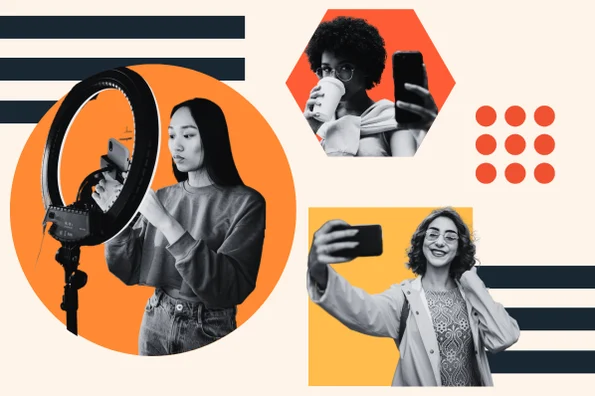
Introduction to Non-English Content Creation
As the digital landscape continues to evolve, content creation has become a vital part of our global communication. While English often dominates this space, non-English content creators are rising to prominence. They bring unique perspectives and rich cultural narratives that resonate deeply with international audiences. However, crafting compelling content in a language other than English can be daunting.
These creators face distinct challenges that can hinder their visibility and reach. At the same time, they have incredible opportunities to showcase their voices on an ever-expanding array of digital platforms. As we delve into the world of non-English content creation, we’ll explore both the hurdles faced by these creators and the exciting possibilities that lie ahead for media diversity and cultural representation in our interconnected world. Join us as we navigate through these challenges and opportunities!
Challenges faced by non-English content creators
Non-English content creators often navigate a landscape filled with distinct challenges. One of the primary hurdles is language barriers. Crafting compelling narratives in a non-native tongue can be daunting, leading to misinterpretations or loss of nuance.
Cultural differences also play a significant role. Content that resonates well in one culture may fall flat or even offend in another. Understanding these subtleties is crucial for effective communication and engagement.
Additionally, access to resources can be limited. Many tools, platforms, and learning materials are primarily available in English, leaving non-English speakers at a disadvantage.
Finding an audience presents its own set of difficulties. Non-English creators must work harder to reach international audiences who may prefer English over their native languages. This creates an uphill battle for visibility on global media platforms where English predominates.

Language barriers and cultural differences
Language barriers can create significant hurdles for non-English content creators. Struggling to express ideas in a different tongue often leads to misunderstandings and misinterpretations. This challenge isn’t just about vocabulary; it’s also about tone, humor, and nuance.
Cultural differences add another layer of complexity. What resonates with one audience may fall flat or even offend another. For instance, certain phrases might be humorous in one culture but carry negative connotations elsewhere.
Navigating these intricacies requires empathy and research. Content creators must immerse themselves in the cultural context of their target audience. Building connections through shared values or experiences helps bridge those gaps.
Understanding diverse perspectives enriches content creation while fostering genuine engagement across various platforms. By embracing these challenges rather than shying away from them, creators can craft more inclusive narratives that resonate worldwide.
The importance of diversity and inclusivity in content creation
Diversity and inclusivity are essential in today’s content landscape. They breathe life into stories, reflecting the myriad experiences of our global society. When creators from different backgrounds contribute, they enrich the narrative.
Content shaped by diverse voices resonates more deeply with audiences. It fosters connections across cultures and bridges gaps that language barriers often create.
Inclusivity is not just a buzzword; it’s about representation. An inclusive approach ensures that various perspectives are showcased, making everyone feel seen and heard.
Digital platforms thrive on this richness. As viewers seek authentic experiences, brands must recognize the power of varied narratives to capture attention and drive engagement.
Embracing diversity elevates creativity as well. New ideas emerge when multiple viewpoints come together, leading to innovative content that stands out in saturated markets.
Opportunities for non-English content creators
The rise of digital platforms has opened doors for non-English content creators. These creators can reach audiences that traditional media often overlooks. As the world becomes more interconnected, international audiences crave diverse perspectives.
Brands are increasingly recognizing the value of local influencers. This creates avenues for partnerships and collaborations that were previously unavailable to non-English speakers.
Moreover, niche markets present unique opportunities. Content tailored to specific cultures or languages allows for targeted engagement. This not only enhances viewer loyalty but also drives higher conversion rates.
Social media platforms now support multiple languages, allowing creators to share their work effortlessly across borders. The demand for authentic voices is growing, making it an ideal time for non-English content producers to shine in global media landscapes.
With creativity and authenticity at the forefront, these creators can carve out valuable spaces within crowded digital environments.
Tips for success in non-English content creation
Understanding your audience is crucial. Research their preferences, cultural references, and trending topics in their language. This knowledge will help you create relatable content.
Utilize digital platforms that resonate with non-English speakers. Explore local social media or video sharing sites where your target audience engages most frequently.
Engage with fellow creators in the same niche. Collaborating expands reach and fosters community support, which can be invaluable for growth.
Invest time in mastering SEO techniques specific to the languages you’re targeting. Keywords may vary significantly across different cultures; tailoring your approach can make a big difference.
Remain authentic and true to your voice. Authenticity attracts a loyal following who appreciates genuine representation of their culture and experiences.
Conclusion
The landscape of content creation is evolving, and non-English content creators are at the forefront of this transformation. They face unique challenges, such as language barriers and cultural differences that can make it difficult to connect with a wider audience. Yet, these hurdles also present opportunities for growth and innovation within the global media space.
Embracing diversity in content means embracing various cultures, languages, and perspectives. This inclusivity enriches the digital platforms we use daily and fosters better understanding among audiences worldwide. Non-English creators have an important role to play in shaping media diversity and ensuring cultural representation becomes more than just a checkbox—it should be intrinsic to all forms of storytelling.
For those navigating this journey, success often lies in leveraging authentic connections with their audience while staying true to their roots. By focusing on high-quality content that resonates personally with viewers or readers, they can break through any perceived barriers.
As the demand for diverse voices continues to grow globally, non-English content creators will find ample room to thrive. The future is bright for those willing to share their stories authentically across languages and cultures; there’s no limit on how far they can reach when tapping into universal themes that resonate deeply within us all.
How to Become a Content Creator?
For more such content, keep visiting QAWire


